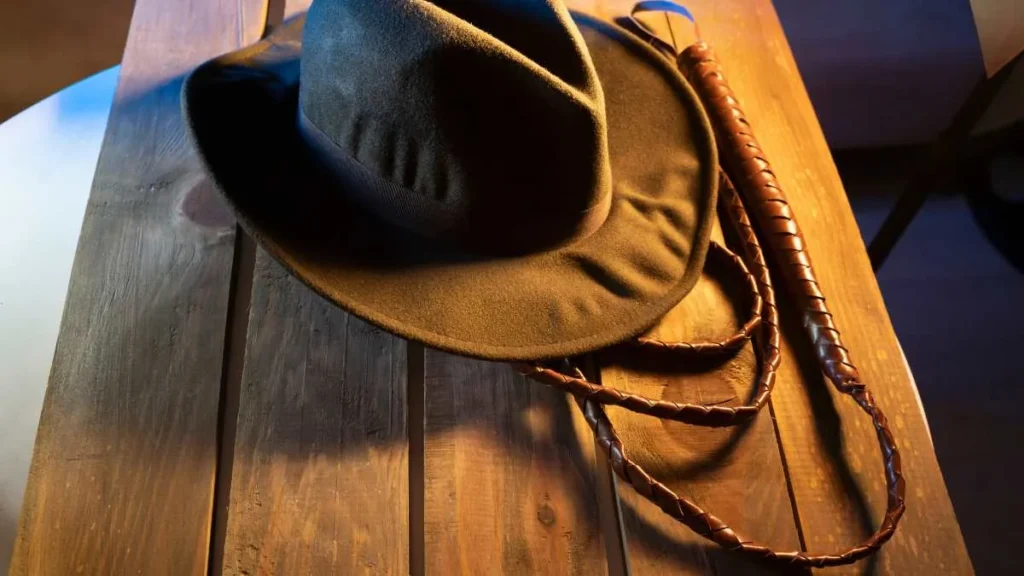The bullwhip, a single-tailed whip usually made from braided leather or nylon, is a tool steeped in history and utility. Originally designed for working with livestock in open country, the bullwhip has evolved into a symbol of control and authority, often portrayed in popular culture as an instrument of dramatic effect. This detailed exploration delves into the bullwhip’s origins, design, usage, and its role beyond pastoral applications.
Origins and Historical Significance
The bullwhip’s origins are somewhat obscure but are believed to have developed from older styles of whips used in ancient Egypt and later, Rome. These early iterations were primarily used for driving livestock and horses. Over time, the design was refined, culminating in the bullwhip’s recognized form in the 17th and 18th centuries, coinciding with the colonization of the Americas where such tools became indispensable in managing cattle.
In the context of American history, the bull whip is often associated with the Old West, where it was a standard tool among cowboys. Beyond its practical applications, the bull whip became a symbol of rugged skill and the untamed nature of the frontier.
Design and Mechanics
The bullwhip consists of several components, each contributing to its functionality and unique characteristics:
- The Handle (or Butt): Provides a firm grip for the user and typically contains the whip’s balance point.

- The Thong: The longest part of the whip, made from braided leather or nylon, tapering from the handle to the tip. The tapering design is critical as it facilitates the gradual acceleration of the whip’s speed along its length.

- The Fall: A single piece of leather attached to the end of the thong, leading to the cracker.

- The Cracker: The portion of the whip that moves faster than the speed of sound, creating the characteristic cracking sound.

The unique design of the bull whip allows it to extend linearly in a loop that, when thrown correctly, travels along the thong to the cracker. The physics of this motion, combined with the tapering design, enables the tip of the whip to exceed the speed of sound, resulting in a small sonic boom.
Usage in Livestock Management
Traditionally, bullwhips were used in open areas to guide and direct livestock, particularly cattle. The loud crack of the whip served more as an auditory tool than a physical one; it was used to startle or direct animals rather than to strike them. Proper use of the bull whip in cattle driving requires skill and precision to ensure that the sound targets the intended animal without causing harm or distress.
Cultural and Competitive Aspects
While bullwhips were practical tools for farmers and cowboys, they have also found a place in competitive and performance settings. Whip cracking competitions focus on the accuracy, precision, and artistic expression of handling a bull whip, with various routines and tricks performed.
In popular culture, the bull whip is famously associated with the character Indiana Jones, whose whip-cracking skills are central to his adventurous persona. This depiction highlights the bullwhip’s role as a tool of exploration and danger management.
Modern Uses and Considerations
Today, bullwhips are still used in ranches and farms but have also become popular among enthusiasts and collectors. Modern materials like nylon have introduced variations in whip making, offering more durability and different handling characteristics compared to traditional leather.
When using a bull whip, safety is paramount. Proper training is necessary to handle a bull whip effectively and safely, as improper use can lead to injuries. Additionally, ethical considerations must be taken into account when using whips with animals to prevent cruelty and distress.
Conclusion: Bullwhip
The bullwhip stands as a fascinating example of a tool that combines utility, design, and cultural significance. From its practical use in livestock management to its iconic status in film and competitive sports, the bull whip exemplifies how a simple tool can achieve a complex status in human society. Whether as part of a cultural heritage or a display of skill, the bull whip continues to crack through the annals of history as a symbol of power, precision, and the human spirit.








